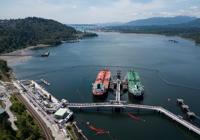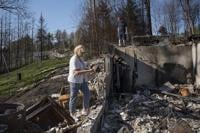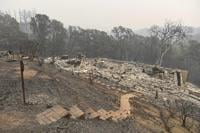BENGALURU, India (AP) — India’s plans to double steel production by the end of the decade could jeopardize its national climate goals and a key global target to reduce planet-heating gas emissions from the steel industry, according to a report released Tuesday.
The report by Global Energy Monitor, an organization that tracks energy projects around the globe, said efforts to decarbonize steelmaking are gaining traction around the world. However, in India, which is the world's second largest steel-producing nation, overwhelming reliance on coal-based technologies presents a big challenge.
“India is now the bellwether of global steel decarbonization,” said Astrid Grigsby-Schulte, project manager of the Global Iron and Steel Tracker at GEM and report co-author. “If the country does not increase its plans for green steel production, the entire sector will miss an important milestone. So goes India, so goes the world.”
Currently, up to 12% of India’s greenhouse gas emissions, which go into the atmosphere and heat the planet, come from steelmaking. That number could double in five years if steel is produced in line with the government’s plans, according to the report.
At the same time, India wants to produce 500 gigawatts of clean power — enough to power nearly 300 million Indian homes — by the end of this decade. The South Asian nation recently crossed the milestone of installing 100 gigawatts of , most of which was installed in the last 10 years.
By 2070, India also aims to go net zero, that is, it will either eliminate all carbon dioxide pollution it emits or cancel it out by using other methods, such as planting trees that absorb carbon.
Steel production is one of the most carbon polluting industries, responsible for nearly 9% of global greenhouse gas emissions. The International Energy Agency has set a target for 37% of global steelmaking capacity to rely on lower-emission electric arc furnaces by 2030. Current projections by GEM show the world reaching just 36% — a shortfall largely due to India’s coal-heavy pipeline.
India plans to expand its steel production capacity from 200 million to over 330 million tonnes per year by 2030. According to the new data, over 40% of global capacity in development — about 352 million tonnes per annum — is in India, with more than half of that using coal-based capacity.
“India is the only major steel-producing nation that has so much coal-based capacity in the pipeline,” said Henna Khadeeja, a research analyst with GEM who also worked on the report.
India’s steel sector releases approximately 2.6 tons of carbon dioxide per ton of steel, roughly 25% more than the global average. , the world’s largest steelmaker, has managed to keep its emissions lower per ton by producing more scrap-based steel and retiring older coal-based plants.
India’s heavy dependence on coal for steelmaking is driven by a combination of factors: low-cost domestic coal, a relatively young fleet of blast furnaces that still have 20–25 years of operational life left, and a lack of natural gas and steel scrap. The country’s scrap recycling ecosystem remains informal, and high-quality iron ore is scarce.
“There is potential for India to change course,” said Khadeeja of GEM. “Much of the planned capacity is still on paper. Only 8% of it has actually broken ground. This means there is still a window to shift toward lower-emission technologies.”
The consequences of producing carbon polluting steel may go beyond climate goals. While India’s steel exports are only a small share of its overall production, they could suffer as major markets like the European Union begin enforcing carbon border taxes next year.
“India may be better off tolerating some short-term pain of technological upgrading to make its steel cleaner for long-term competitiveness gain,” said Easwaran Narassimhan of the New Delhi-based think tank Sustainable Futures Collaborative.
___
Follow Sibi Arasu on X at ___
The Associated Press’ climate and environmental coverage receives financial support from multiple private foundations. AP is solely responsible for all content. Find AP’s for working with philanthropies, a list of supporters and funded coverage areas at .








































